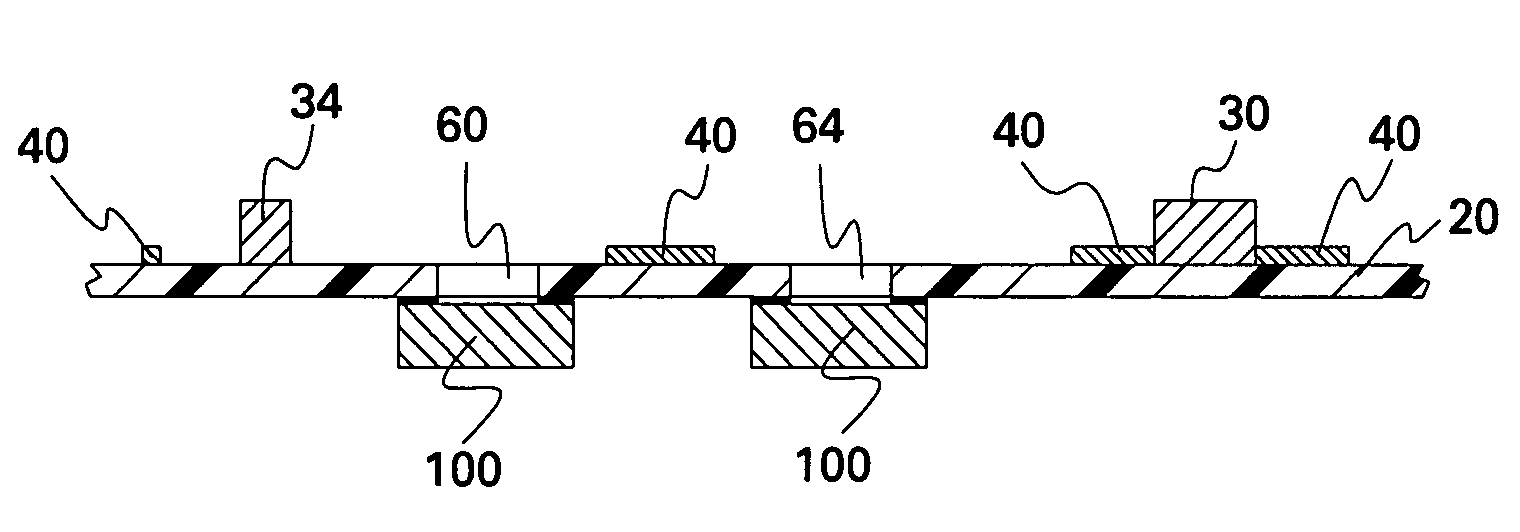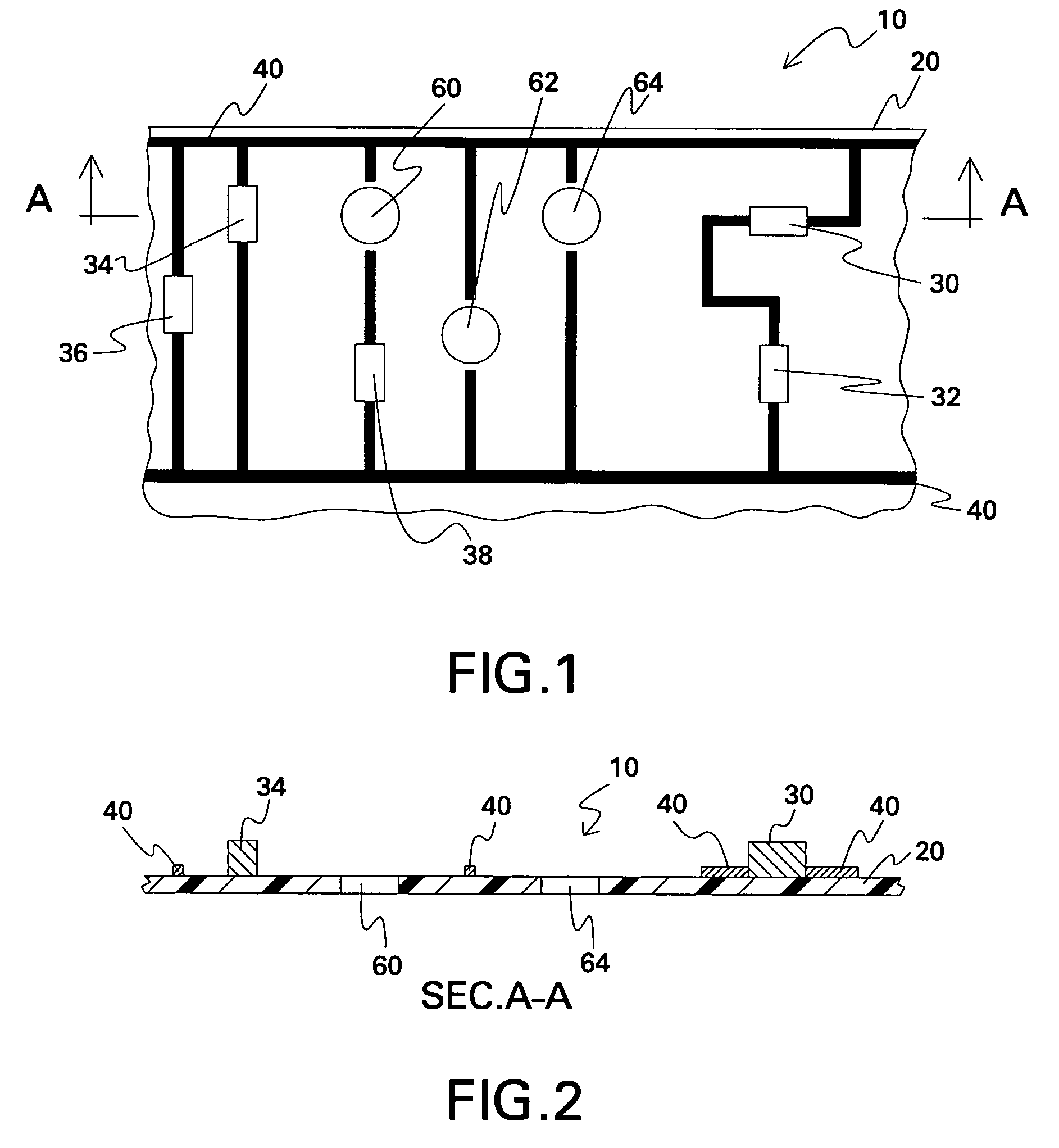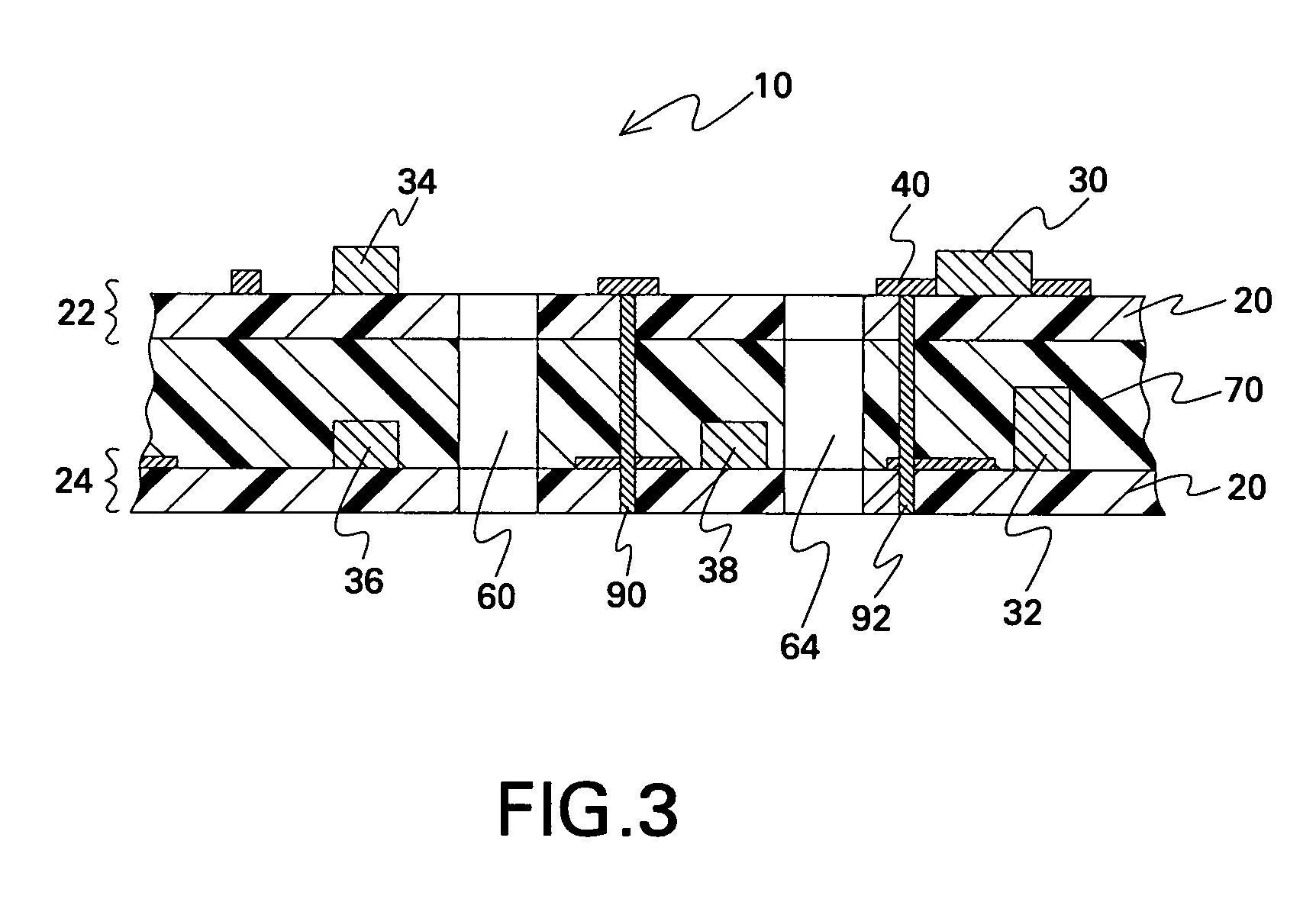Flexible interconnect structures for electrical devices and light sources incorporating the same
a technology of flexible interconnect structure and electrical device, which is applied in the direction of lighting and heating apparatus, semiconductor/solid-state device details, domestic cooling apparatus, etc., can solve the problems of reducing device life, degrading performance, and excessive junction temperature, and achieves rapid heat dissipation
- Summary
- Abstract
- Description
- Claims
- Application Information
AI Technical Summary
Benefits of technology
Problems solved by technology
Method used
Image
Examples
Embodiment Construction
[0024]As used herein, the term “flexible” means being capable of being bent to a shape that has a radius of curvature of less than about 10 cm, and preferably less than about 1 cm. The terms “electromagnetic radiation” or “light” are used interchangeably. The term “substantially transparent” means allowing at least 80 percent, preferably at least 90 percent, and more preferably at least 95 percent of light transmission. The term “heat sink” means a structure or a component that transports heat away or otherwise removes heat from a heat source.
[0025]The flexible interconnect structure of the present invention is equally applicable to devices that include either LEDs, or LDs, or both. Therefore, although a LED is typically shown or referred to, a LD may occupy the same position, depending on the design and purpose of the overall device.
[0026]FIG. 1 shows schematically a section of a flexible interconnect structure 10 of the present invention. FIG. 2 is a cross-sectional view of flexib...
PUM
 Login to View More
Login to View More Abstract
Description
Claims
Application Information
 Login to View More
Login to View More - R&D
- Intellectual Property
- Life Sciences
- Materials
- Tech Scout
- Unparalleled Data Quality
- Higher Quality Content
- 60% Fewer Hallucinations
Browse by: Latest US Patents, China's latest patents, Technical Efficacy Thesaurus, Application Domain, Technology Topic, Popular Technical Reports.
© 2025 PatSnap. All rights reserved.Legal|Privacy policy|Modern Slavery Act Transparency Statement|Sitemap|About US| Contact US: help@patsnap.com



